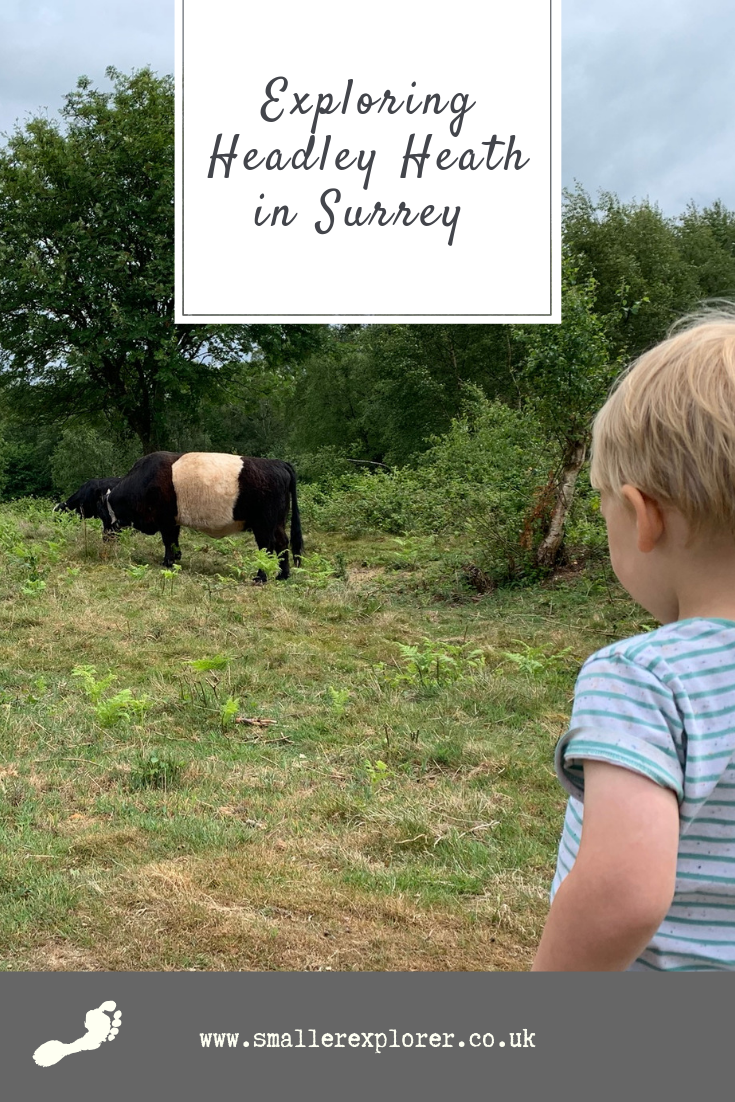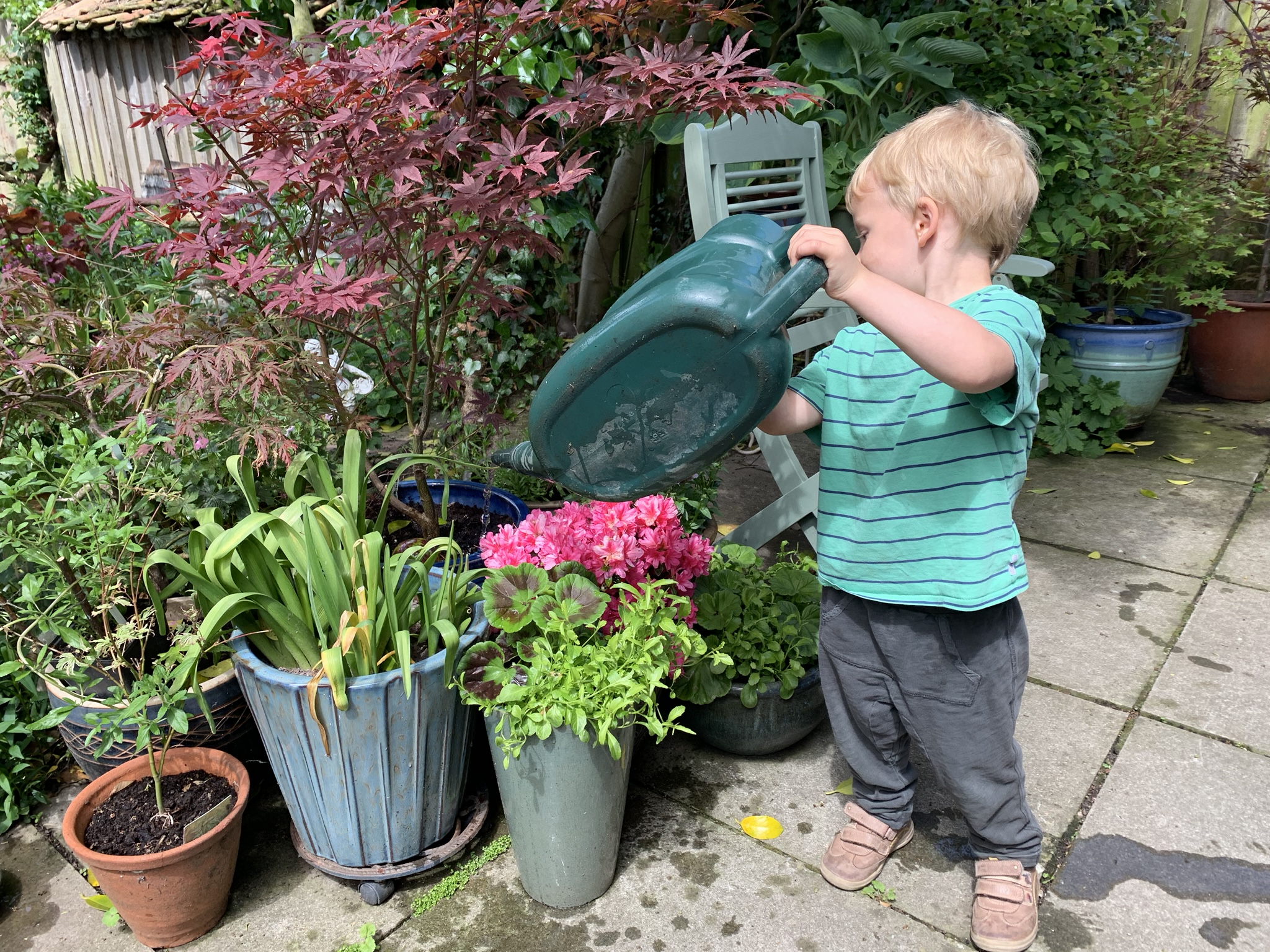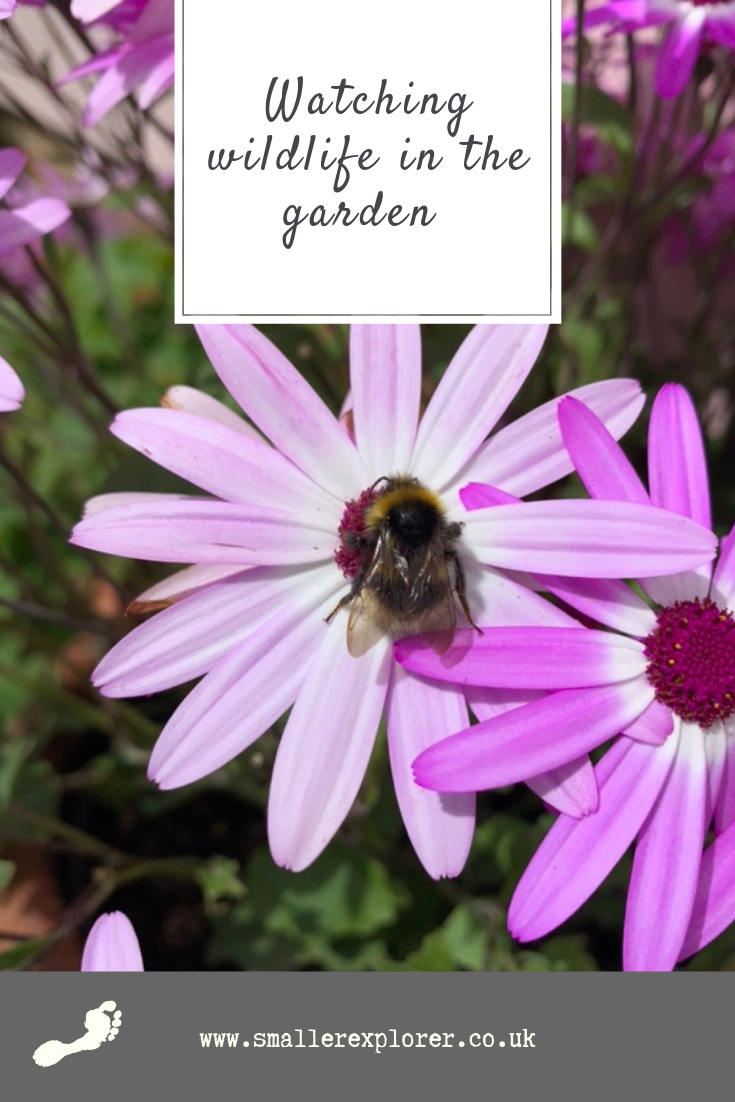I have two days off work to spend time with my littlest, so we decided to try somewhere new. We drove over to Headley Heath, partly in search of butterflies, but also to just have an enjoyable walk around somewhere we’d not been to before.
Headley Heath in the North Downs region and is about 300 hectares large. It’s obviously heathland (which I love) but also there’s pockets of woodland and dry chalk grassland, plus a good viewpoint out over the Downs from one point, so very interesting to visit. There’s lots of wildlife to look out for here including butterflies, birds, insects and lizards.
The info leaflet that I picked up told me that ‘lowland heath is one of the most endangered habitats in the world, even rarer than the rainforest’, which amazed me. And how fortunate we are to live so close to this site.
Headley Heath has a useful 3km ‘lizard trail’ that is suitable for families. I’d say it’s also fine for buggies in the summer months too. It’s quite undulating in parts but definitely doable. There’s two car parks which are free for National Trust members. No cafe or facilities so bring a picnic and cross your legs.
We head off in the direction of the Belted Galloway cattle which graze on the heathland. Apparently they have a vital role in maintaining the heathland habitats. (We visited the Romney Marsh earlier in May and the sheep which are farmed down there are also vital in maintaining the landscapes and rare flora and fauna down there too).
B loved watching the cows. They are an easy win for children as easy to spot! I didn’t want to get too close though.
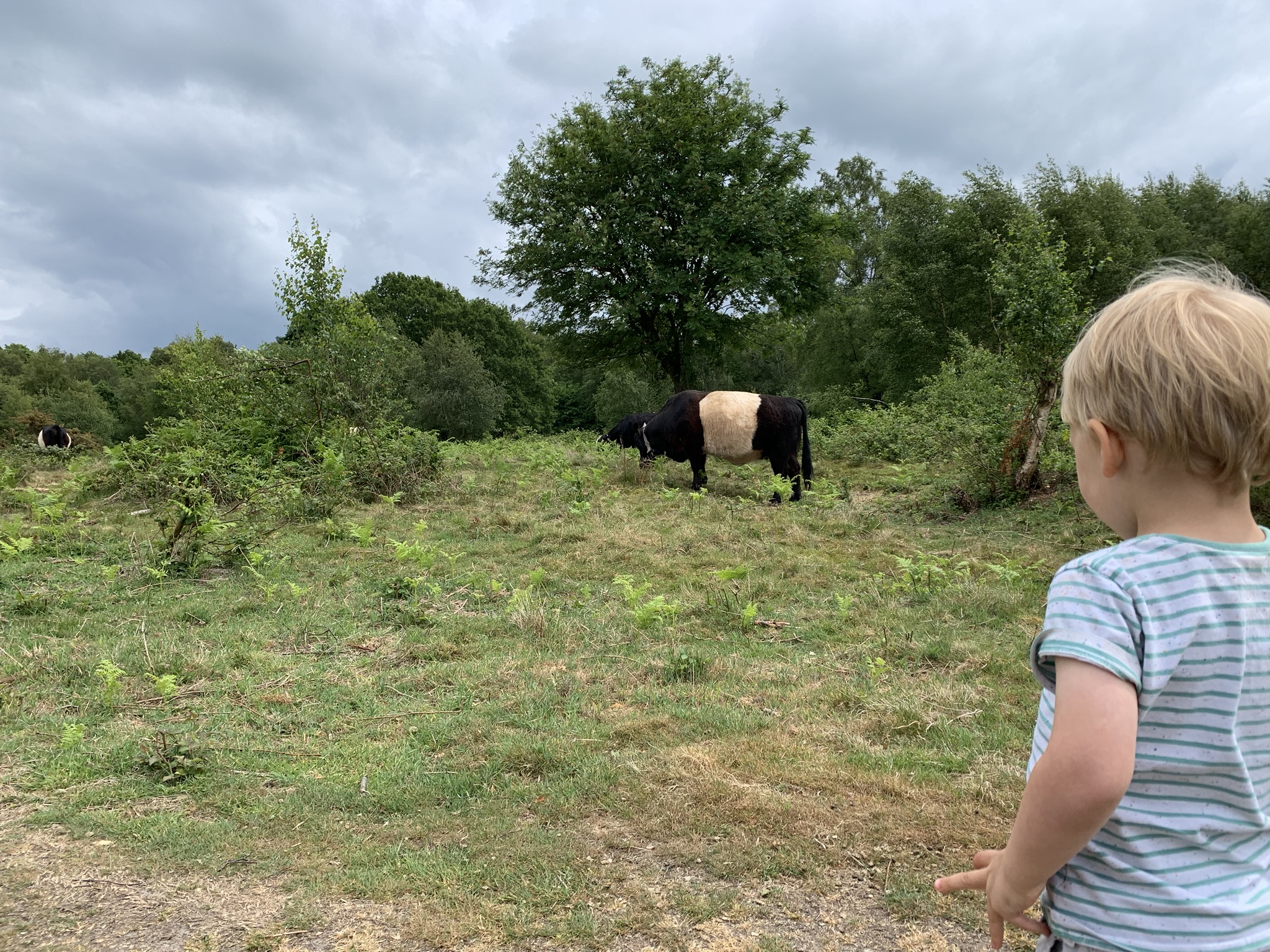
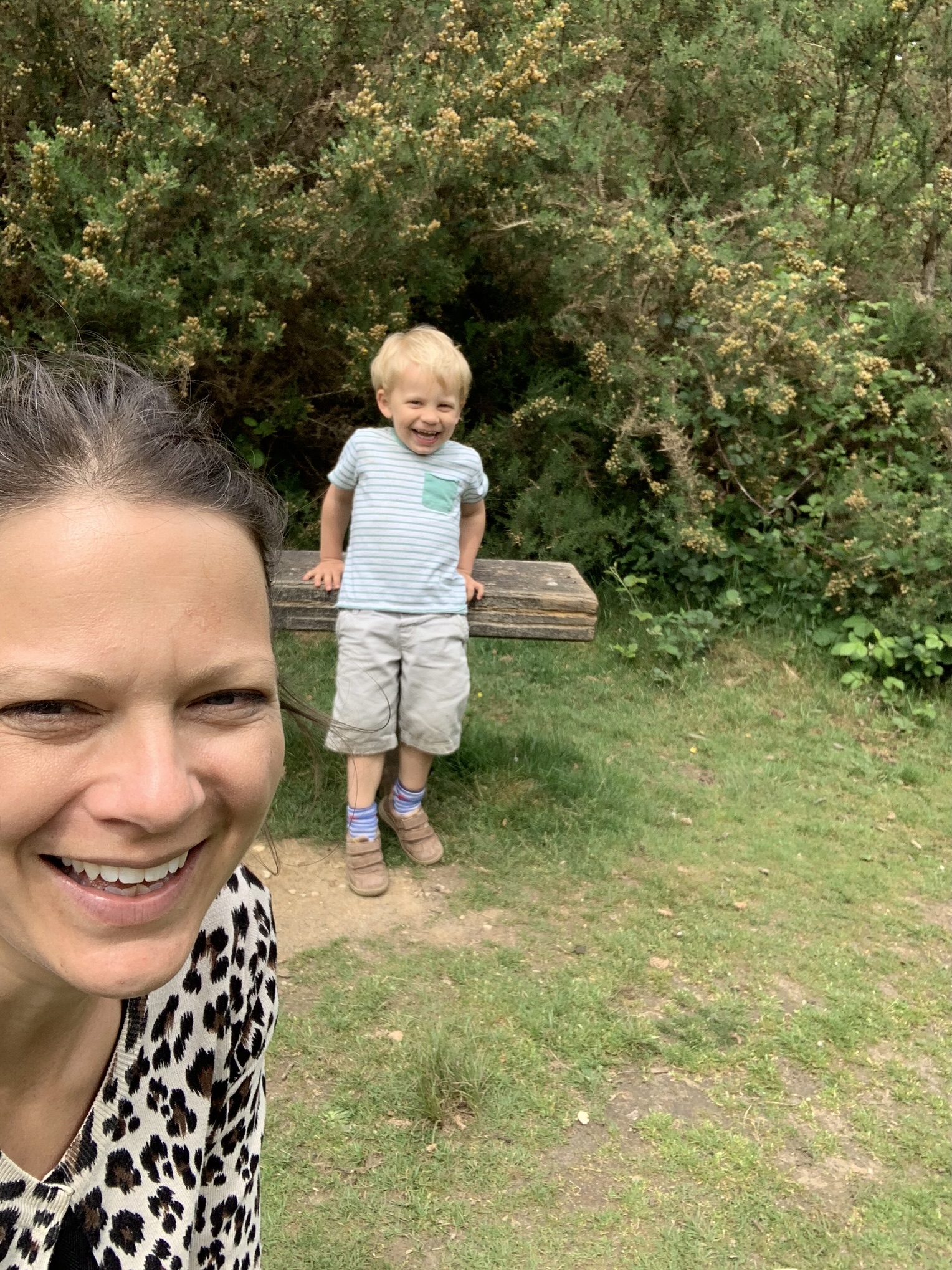
Having fun in our nature playground
Then we wandered through the Heath, keeping the orange trail markers in our site, though as the site is fairly small it doesn’t really matter if you veer off onto a different path, it’s tricky to get lost here.
B did better than me and found a colony (?) of ants looking busy going in and out of a small hole, plus a bright purple/red butterfly – possibly a peacock butterfly. We also both spotted a white butterfly, which I think is the most common here – the cabbage white. We’ll try butterfly spotting again soon, but here’s a useful guide to butterfly types.
We also saw a foxglove, which are common here in summer and attract the bees plus lots of gorse, and these pretty white flowers (my knowledge of flowers is quite poor I’m finding!) which were also attracting the bees.
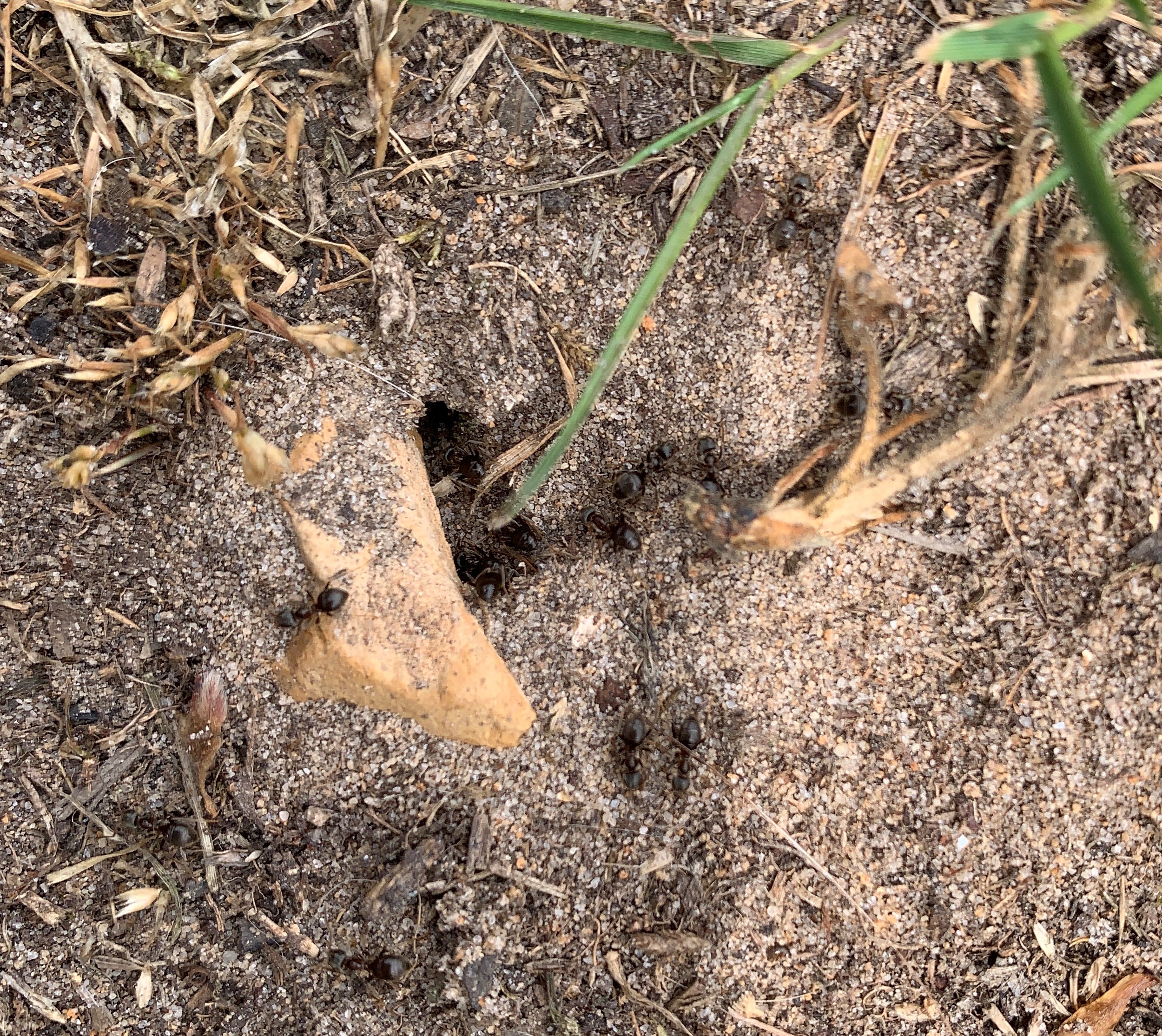
Ants busy making a home
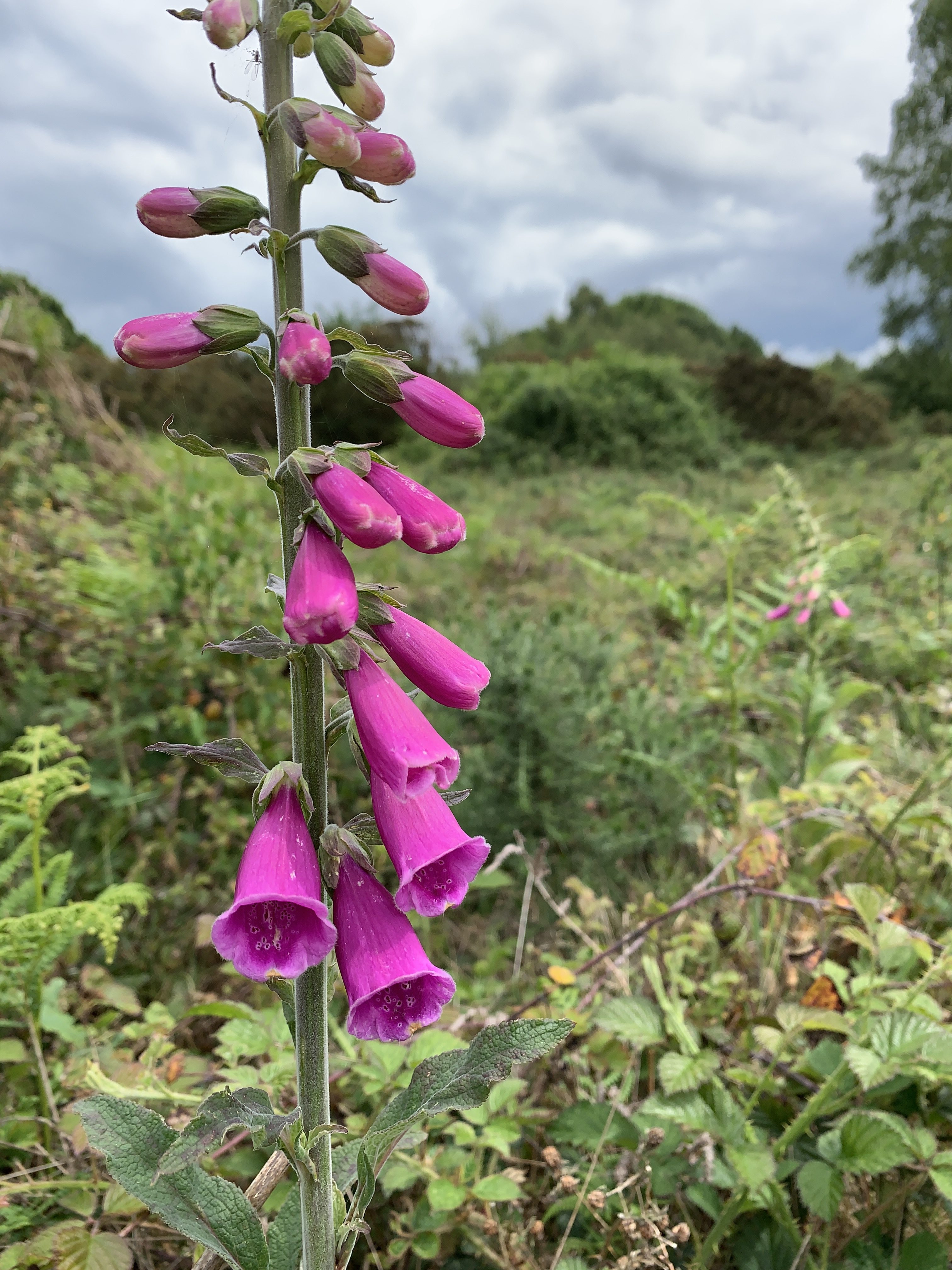
Foxglove at Headley Heath, a food supply for bees

We stopped at Brimmer Pond for a rest, to look out for newts and dragonflies (didn’t see any) and to listen for birds. I think we partly had trouble as my toddler is RATHER LOUD. If you take a listen to the short video you’ll understand! I tried looking up what birds were singing when we got home, using the Warbler app (£4.99) and it told me it was possibly a Great Tit, Common Blackbird or Great Spotted Wren.
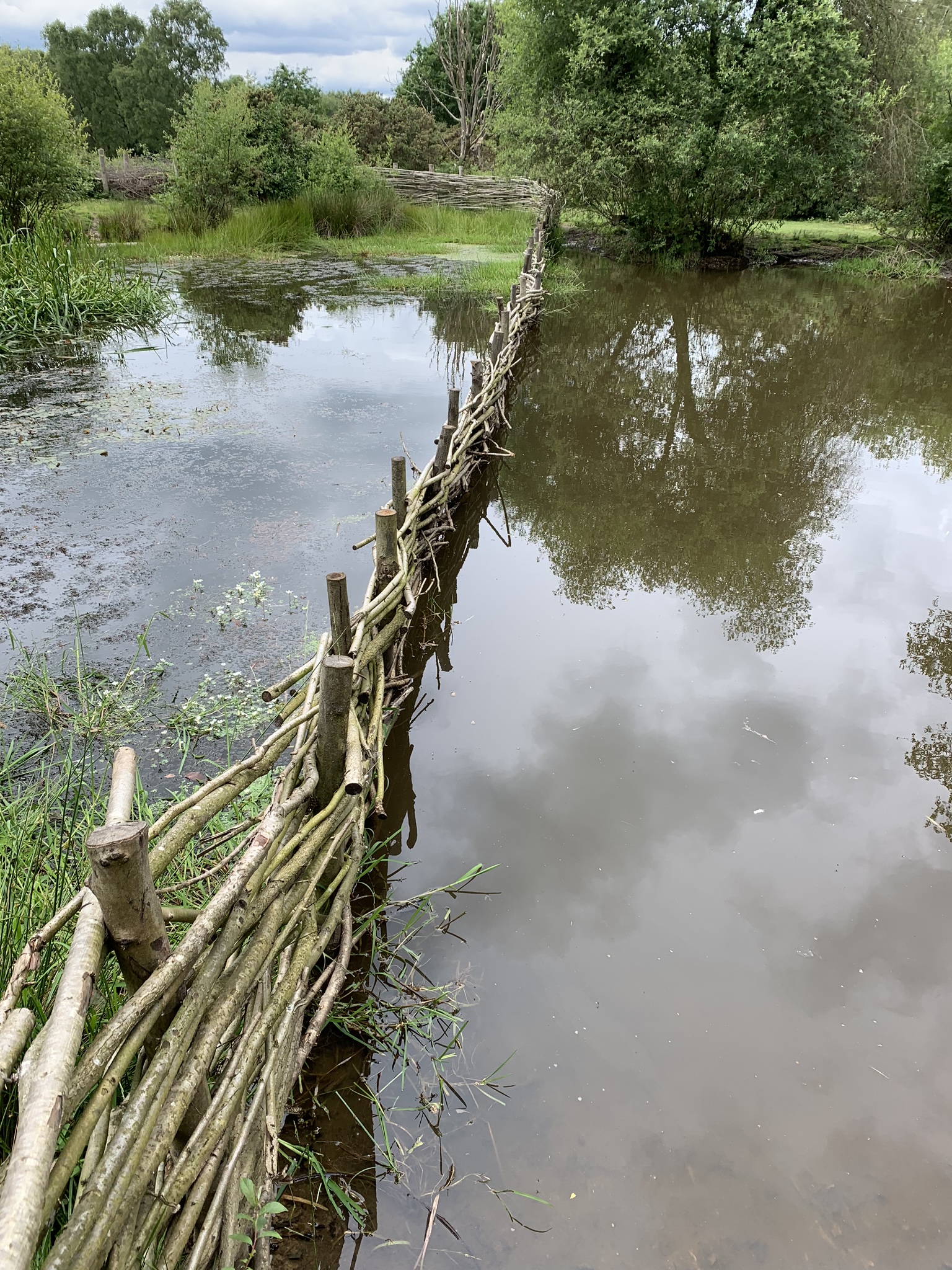
Brimmer Pond at Headley Heath
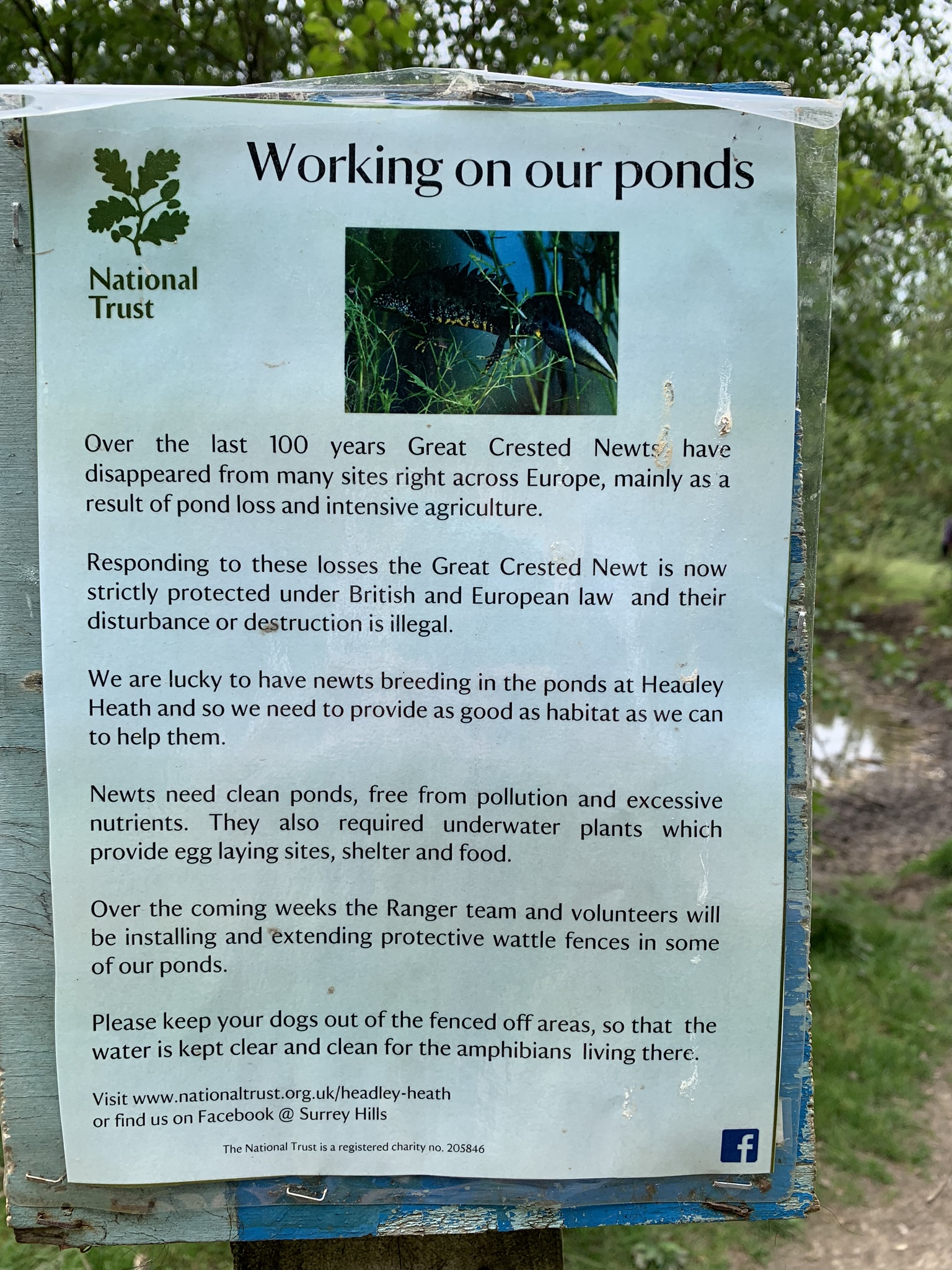
Notice about the newts at Headley Heath
We also had a poke about for insects. Looking under old bits of wood is a good idea if you are searching for insects. We found a few disgruntled woodlice plus a couple of large beetles. They scuttled away before we could look any closer at them unfortunately.
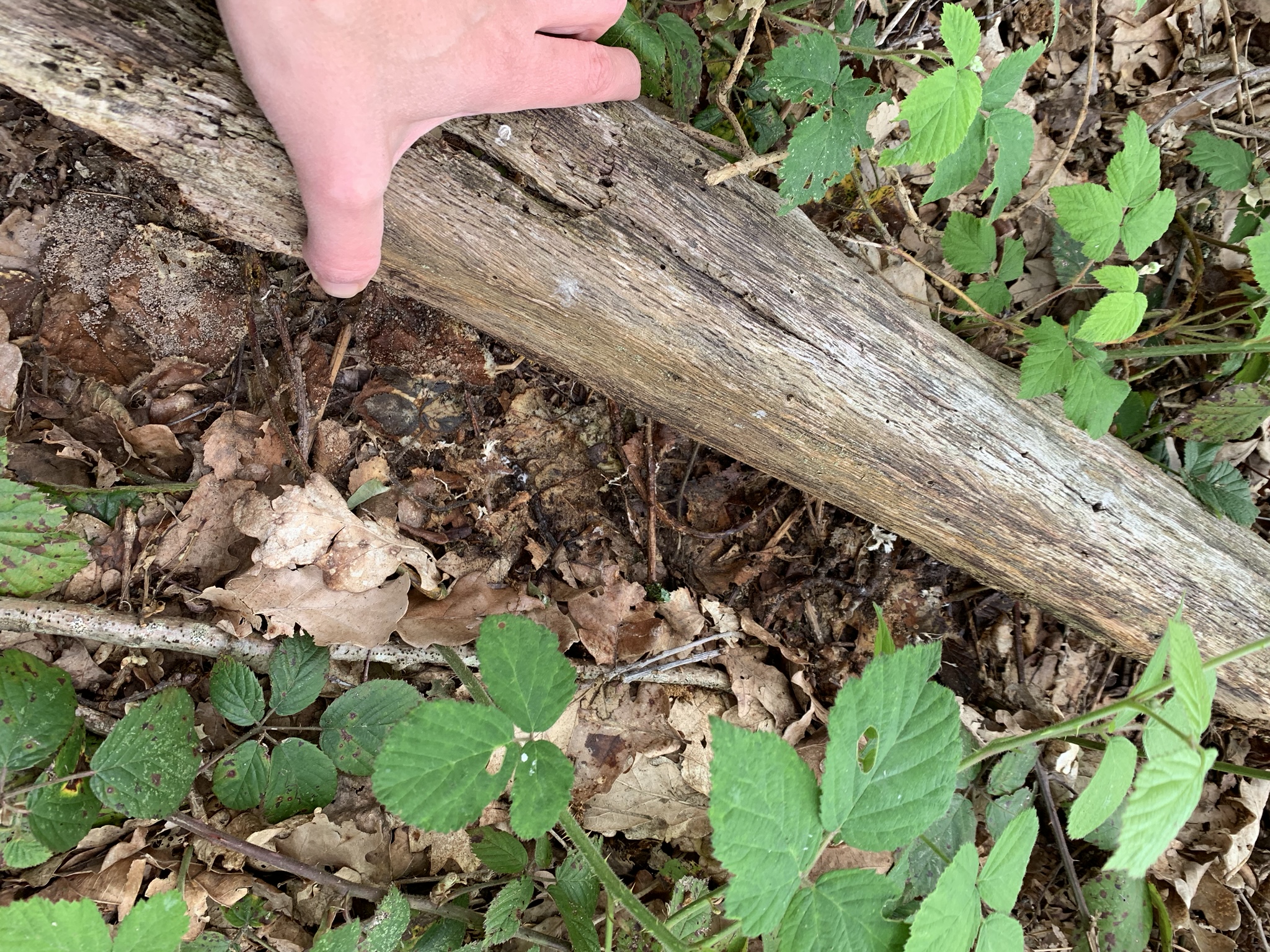
Searching under logs for insects
Admittedly I did have to take B to a playground before we went to Headley Heath, but once we arrived and were exploring he really enjoyed it and didn’t want to come home, so I’m now going to describe any outing to a wilder area as a trip to the nature playground!
